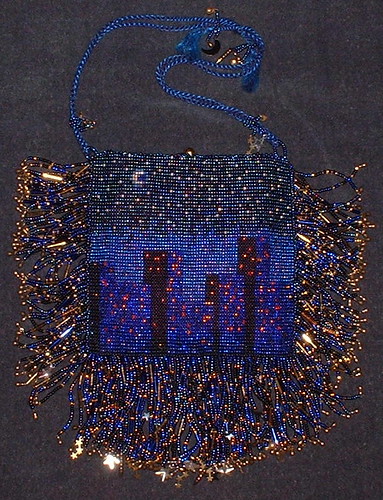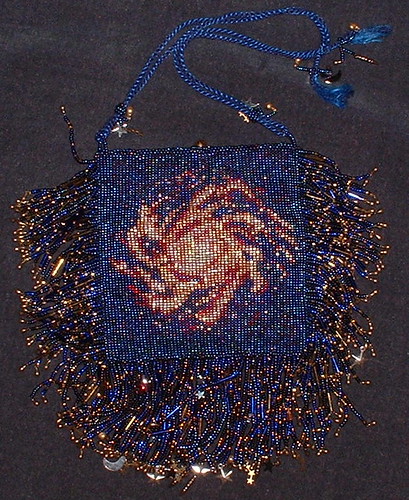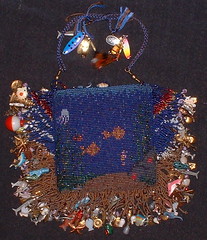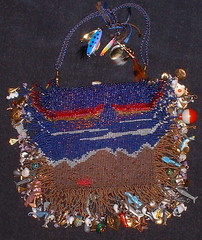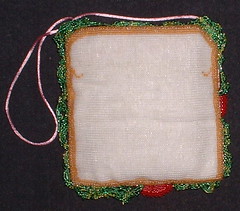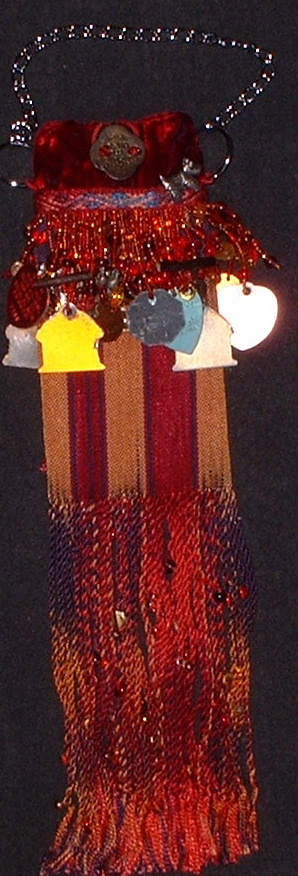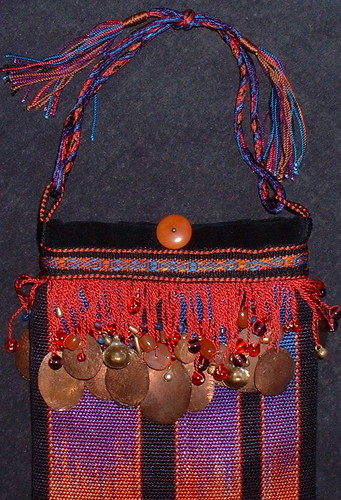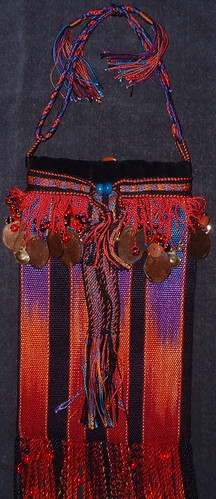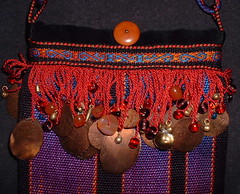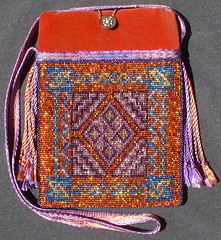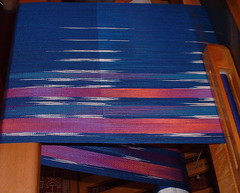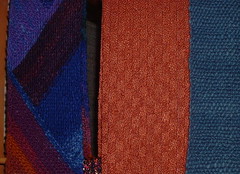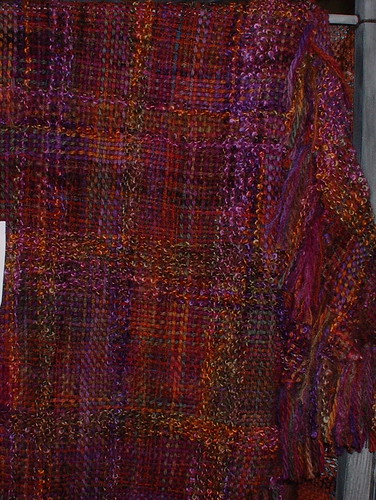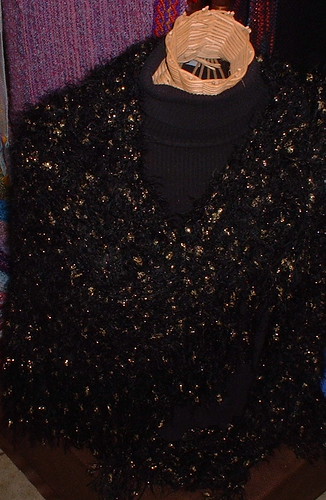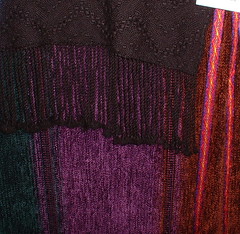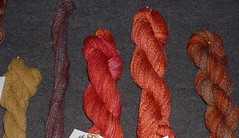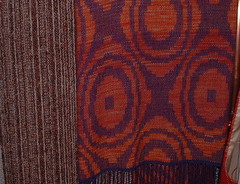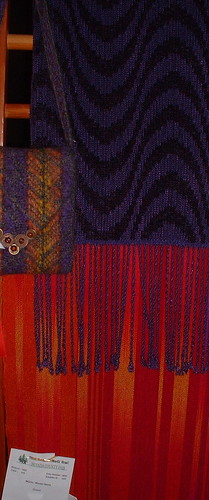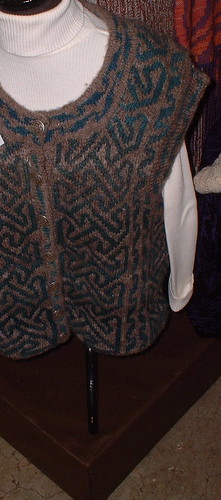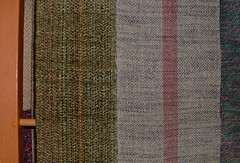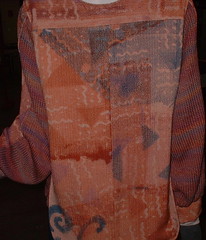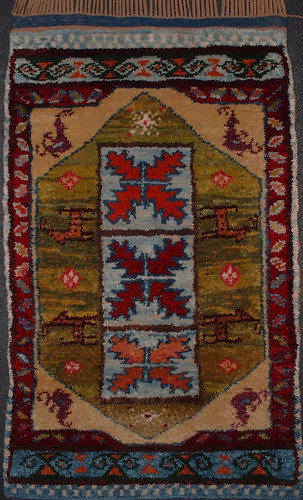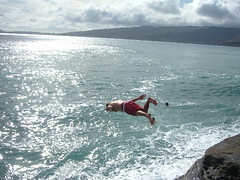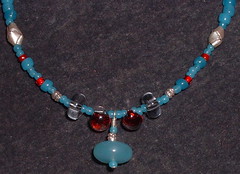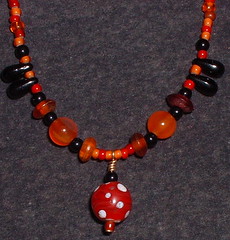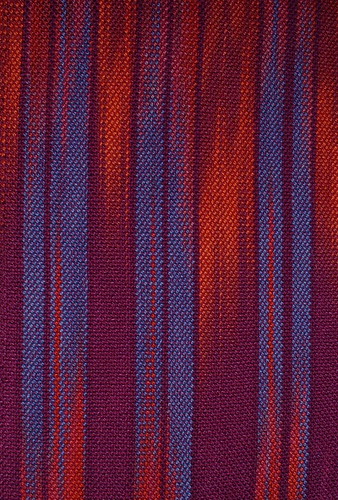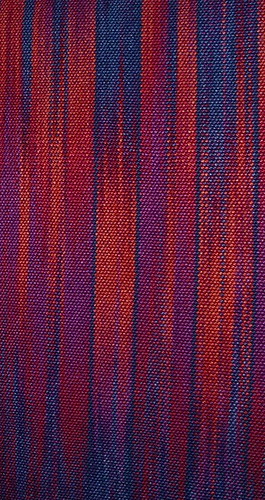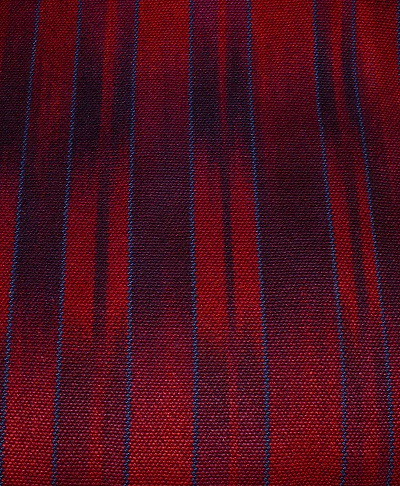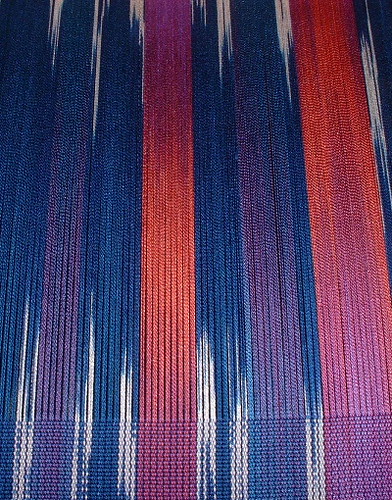The Mess of Creating
Most projects start out with a nice clean picture in my mind of the finished piece. Sometimes (like Coin Purse, from the 8/19 post), it's a process of inventing as I go, but mostly it's a process of steps and problem solving to get the end result I want.
Once the idea has settled, and the work begins, whether it's spinning, dyeing, warping, or gathering materials, there's still plenty of opportunity to make choices, and course corrections, as creating never seems to move along with simple ease. Sometimes, when I get to this *thinking* part of the process, I have to put the work aside and take my time. I usually notice a certain sense of fear, or resistance, at the point of the project where I'm either forging new territory, or learning some technique I have not used before. It's very exciting to work through this part of any project: I'm anxious to see if it all works out.
In my current project, I am trying something new, and it has reached the *messy* stage, where I need to keep track of where I am, and pay attention as I make decisions. It's a bit more tiring than the usual flow of the process, but, as I said, more exciting, too. And, as the project nears completion and it all pulls together, it's very rewarding. That's why Coin Purse, and Evening Bag, from the two previous posts, still remain my favorites from their respective series: they were challenging to create (and they worked! some don't).
Here's the current mess:
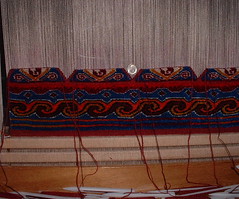
It reminds me of knitting argyle socks (not that I ever have) with all the bobbins to keep straight:
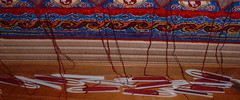
And then there is the mess this mess creates:
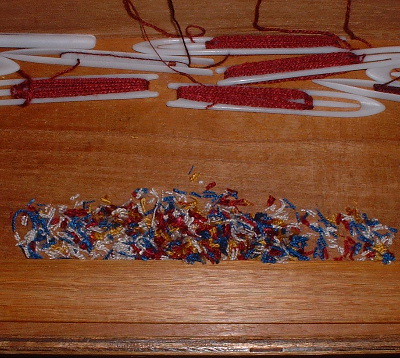
(As usual, you can click on the photos for a bigger view).
A few posts ago, Valerie commented on the inherent nuttiness of spinning lots of yarn in order to cut it up into tiny bits, and yes, it does seem a bit nutty. But the yarn, once it's spun, is just yarn. Yes, it's pretty by itself, but it's also *useful* and the next step in the process is fun and has it's own beauty. *And*, rarely mentioned but really fabulous: I can use thrums from other projects:
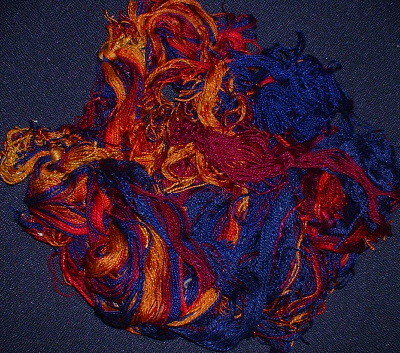
Thus I *save* bigger bits, to make them into littler bits. This creates a storage issue in the studio as I save bags of thrums:
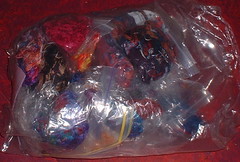
To add another layer: after knotting the thrums into pile, I end up with even smaller little bits, as in the photo above, which, believe it or not, I save:
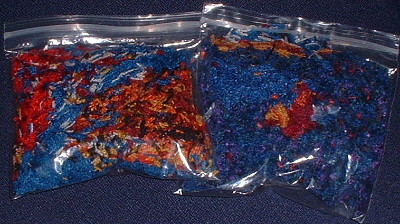
and send to a friend who does silk fusion. These little bits become inclusions in her fabric, little sparkles, so really, nothing goes to waste!
So this means I have bags of thrums-too-good-to-throw-away, and then other bags of tiny clippings, all of which must be stored *somewhere*. The studio is bursting. I've been cleaning out. I really mean it this time, I'm serious. Really.
I started with magazines and books. I found a home for a whole pile of old SpinOffs, and next on the block are weaving and beading magazines. eBay is now my friend. After I get my first few auctions under my belt, I have scads more to list. I feel so virtuous clearing out, making room on the shelves for the things stored in boxes in front of the shelves. Yep, making room for bags of little silk bits, and slightly bigger silk bits (and wool bits. We haven't mentioned wool bits). Soon, I may even be able to (gasp!) see the floor.
Mess comes in many forms, even reaching into this blog. Despite having to register to make comments, spammers have gotten through, forcing me to go through steps to delete their sorry asses. So, I'm trying out the *word recognition* feature, to see if I can cut the creeps out of the loop. I'm sorry for this, hope it's not too unwieldy and onerous, except to the spammers.
Last: thanks for the birthday wishes! I'm glad you are enjoying the photos of bags, and yes, there are many puns left unbagged. There are more in the series, but there is an endless number I never got to, before moving on. I'll keep posting old stuff, whenever the new stuff is just too messy.
Once the idea has settled, and the work begins, whether it's spinning, dyeing, warping, or gathering materials, there's still plenty of opportunity to make choices, and course corrections, as creating never seems to move along with simple ease. Sometimes, when I get to this *thinking* part of the process, I have to put the work aside and take my time. I usually notice a certain sense of fear, or resistance, at the point of the project where I'm either forging new territory, or learning some technique I have not used before. It's very exciting to work through this part of any project: I'm anxious to see if it all works out.
In my current project, I am trying something new, and it has reached the *messy* stage, where I need to keep track of where I am, and pay attention as I make decisions. It's a bit more tiring than the usual flow of the process, but, as I said, more exciting, too. And, as the project nears completion and it all pulls together, it's very rewarding. That's why Coin Purse, and Evening Bag, from the two previous posts, still remain my favorites from their respective series: they were challenging to create (and they worked! some don't).
Here's the current mess:

It reminds me of knitting argyle socks (not that I ever have) with all the bobbins to keep straight:

And then there is the mess this mess creates:

(As usual, you can click on the photos for a bigger view).
A few posts ago, Valerie commented on the inherent nuttiness of spinning lots of yarn in order to cut it up into tiny bits, and yes, it does seem a bit nutty. But the yarn, once it's spun, is just yarn. Yes, it's pretty by itself, but it's also *useful* and the next step in the process is fun and has it's own beauty. *And*, rarely mentioned but really fabulous: I can use thrums from other projects:

Thus I *save* bigger bits, to make them into littler bits. This creates a storage issue in the studio as I save bags of thrums:

To add another layer: after knotting the thrums into pile, I end up with even smaller little bits, as in the photo above, which, believe it or not, I save:

and send to a friend who does silk fusion. These little bits become inclusions in her fabric, little sparkles, so really, nothing goes to waste!
So this means I have bags of thrums-too-good-to-throw-away, and then other bags of tiny clippings, all of which must be stored *somewhere*. The studio is bursting. I've been cleaning out. I really mean it this time, I'm serious. Really.
I started with magazines and books. I found a home for a whole pile of old SpinOffs, and next on the block are weaving and beading magazines. eBay is now my friend. After I get my first few auctions under my belt, I have scads more to list. I feel so virtuous clearing out, making room on the shelves for the things stored in boxes in front of the shelves. Yep, making room for bags of little silk bits, and slightly bigger silk bits (and wool bits. We haven't mentioned wool bits). Soon, I may even be able to (gasp!) see the floor.
Mess comes in many forms, even reaching into this blog. Despite having to register to make comments, spammers have gotten through, forcing me to go through steps to delete their sorry asses. So, I'm trying out the *word recognition* feature, to see if I can cut the creeps out of the loop. I'm sorry for this, hope it's not too unwieldy and onerous, except to the spammers.
Last: thanks for the birthday wishes! I'm glad you are enjoying the photos of bags, and yes, there are many puns left unbagged. There are more in the series, but there is an endless number I never got to, before moving on. I'll keep posting old stuff, whenever the new stuff is just too messy.
